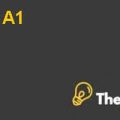Case Synopsis
Café D. Pownd is one of the newly established cafeterias at the National Academy of Liberal Arts. The cafeteria serves its meals to 450 students of Cambridge Hall and also another 10 students belonging to Nottingham Hall. The faculty of the institution also visits this cafeteria. The opening hours of the cafeteria in order to serve its students are from 7a.m. to 7p.m., which means its operates for a total of 12 hours each day however the peak period of cafeteria is from 5p.m. to 6.30p.m.
The issues of waiting times are faced by all the faculty members and the students during the above peak time. A variety of meal items are served to the students by the cafeteria such as salads, desserts and sandwiches. There are three waiting lines within the cafeteria, which are the pre-cooked food line, the interactive food line and the cashier line where the final payment for the meals is paid. The first line is for meals that are already cooked while the second line is where the students can order the chefs to prepare their order meals.
A significant number of complaints have been made by the students and the staff members regarding the waiting time in all the three queues. It was proving to be burdensome for the students to get their desired meals and the drinks at the right time and they had to wait a lot. This also resulted in congestion within the cafeteria and additional expenses for the cafeteria. The assistant resident manager, Jason Mah, is aware of the waiting issue at the cafeteria and is considering analyzing the issue in depth in order to resolve the issues with the waiting times. However, in making the recommendations to the board he has to present a detailed analysis of each of the three queues and the layout of the cafeteria focusing on all the operational constraints and issues. Lastly, the issue needs to be resolved without making any significant disbursements or any major investments.
Analysis
The analysis has been performed for all the quantitative factors and qualitative factors separately utilizing core operational models and concepts.
Objective
The objective of the resident manager of Cambridge Hall is to reduce the waiting times of all the three queues so that the students get their meals on time. The main factor for the delay in the services is the inefficient layout of the cafeteria which is most probably due to the small space of the cafeteria. Therefore, the objective is to analyze the situation qualitatively and quantitatively and to provide a recommendation to the board of the institution in order to overcome this problem.
Quantitative Analysis & Assumptions Used
In order to look into the issues of the waiting times for the three stations, survey data has been collected by Mah during the period for about 35 observations. The stopwatch approach has been used by Jason Mah in order to record these times for each for the three queues. The quantitative analysis has been performed by first computing the mean waiting times for each of the three queues and the arrival time of each student. Moreover, the average waiting time for each of the three queues has been compared with the desirable waiting times by the students of the academy in the pre-cooked, interactive and the cashier queue. 5 minutes, 10 minutes and 1 minute was the reasonable time which was considered as reasonable by the university students for the pre-cooked, interactive and cashier queue.
The average waiting time has been calculated as the sum of the average of the arrival time plus the average waiting time for each of the three respective queues. The average waiting time calculated for the pre-cooked line is 6.26 minutes and its desirable time is 5 minutes so there has been an increase in the waiting time by 1.26 minutes. Similarly, the average waiting times for the cashier and the interactive liens is 5.71 and 10.79 minutes, which results in lost time of 4.71 and 0.79 minutes respectively.
The maximum delay or the maximum waiting time difference is, therefore, at the cashier station. There are two basic reasons for this huge waiting time at the cashier counter. The first reason is that the prices of some meals was not programmed in the system which took additional 30 seconds to record those prices and the salad/candy taken by the students had to be weighed at the cash register. Furthermore, the variability has been calculated for each of the line. The standard deviation in the waiting times of each of the three stations is 120%, 108% and 54% respectively............
This is just a sample partial case solution. Please place the order on the website to order your own originally done case solution.














